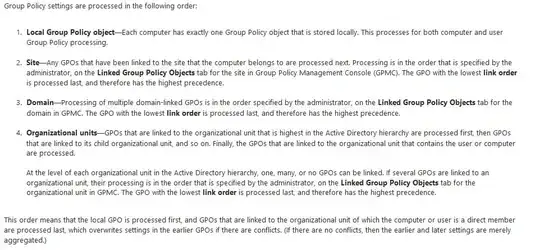What is the precedence for Enforeced GPOs, I can't really find any MS articles which give a refined answer.
My current understanding is as follows:
Lets say we have 5 GPO's - GPO1 through GP05. I will use an exam question to put into context.
GPO Linked to Enforced
GP01 - contoso.com - No
GP02 - contoso.com - Yes
GP03 - Site 1 - Yes
GP04 - OU1 - No
GP05 - OU1 - Yes
Now my understanding would mean they would apply in this order, from the first to apply to the last to apply (thus the one with most precedence).
GP01 -> GP04 -> GP05 -> GP02 -> GP03 (meaning 3 has the final say on any duplicates)
Am I correct in my understanding? Many thanks!
